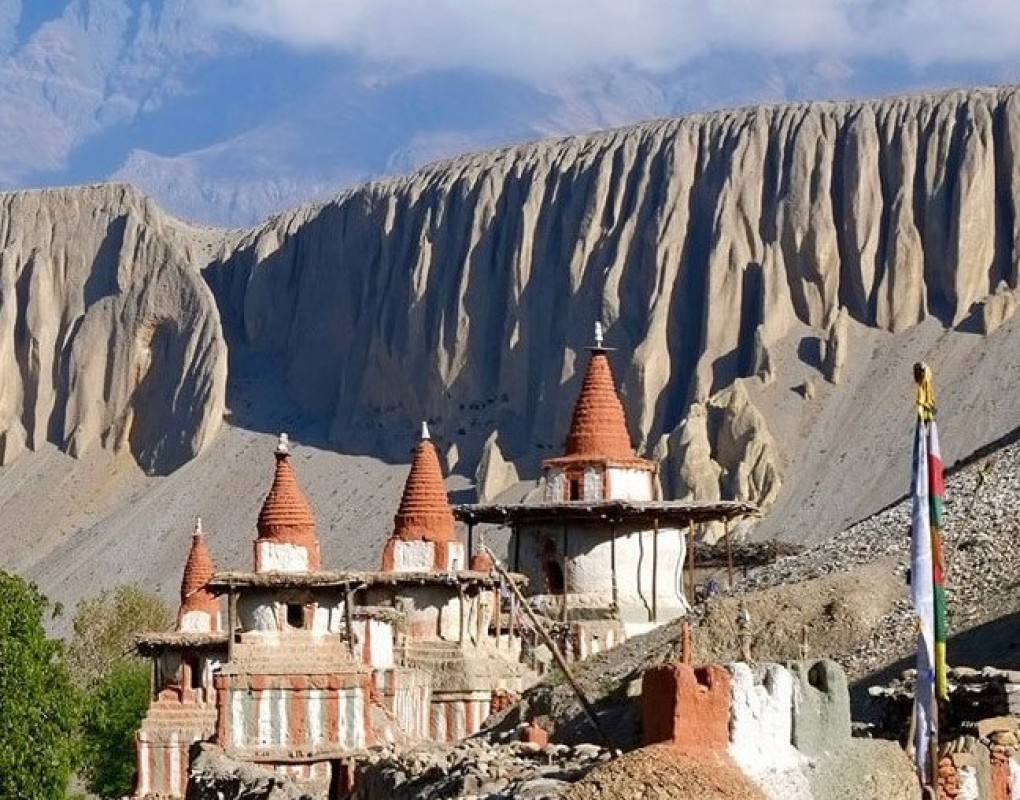
Tour feature: Hindu/Buddhist culture, majestic Manaslu, Annapurna and Dhaulagiri Himalaya, colorful ancient artistic caves, mysterious colorful grand canyons and arid nature in Mustang, traditional villages and lifestyle of Thakali/Gurung/Lo people in Mustang, nomad camps and culture in Mustang, colorful clay dung plastered traditional stupas and monasteries in Mustang, beautiful temples in Muktinath and Pokhara. Very exciting cultural activities, mask dances, rituals, procession of monks & locals in Tiji festival. The festival falls in May sometimes in June. Interesting activities of Yarthung horse race festival which falls in full moon day in August as per the lunar calendar.
Mustang in brief: Mustang falls in the rain shadow area of Annapurna and Dhaulagiri (over 8000m Himalaya range). It became arid with lots of barren land. Mustang is also the valley of herbal medicines, Himalayan pink salt and sacred Shaligrams; the fossils lying along the bank of Kaligandaki River. Colorful mysterious caves overhanging in the Kaligandaki grand canyons seem so interesting. Due to fragile ecosystem, the region is considered the restricted zone above Kagbeni. It is surrounded by sky soaring Himalayan peaks like Dhaulagiri, Annapurna, Nilgiri, Dhampus, Muktinath, Damodar, Chungen Changma etc. Mustang is the territory of several mountain tribes like Thakali, Lobas, Khampas, Bhotia Gurung and Bista who have very interesting culture. There are traditional villages with typical mountain architecture. There are also some nomads who follow trans-humane system. An expedition that still can unforgettable moments even most seasoned traveler and adventurous. A journey that combines the walk the streets at high altitude surrounded by the highest peaks of the world with the meeting of people from simple archaic culture and millennial and with a deep religiosity and a surreal mysticism. A country open to tourism only since 1992 and where only a certain number of foreigners allowed every year, it is a '"restricted area". Bureaucratically Low Mustang ends in Kagbeni, beyond which it is necessary to be equipped with special permits. It is said that limited number of visitors are permitted to protect pristine interesting culture and fragile ecosystem.
A journey to discover the ancient Tibetan culture and affected by the recall of a nature and a life still intact. Together with the Dolpo, Mustang is the region of Nepal that the longer it lived in total isolation from the rest of the world, wild environments with lights and colors unreal. At an average altitude of 3500 meters and crossings over 4000 meters passes, the Mustang is a succession of valleys, plateaus, canyons where all shades of gray, pink and red chase, blend and break down. High rocky peaks eroded by the wind overhang rivers, paths and quaint villages built in dried mud bricks. Small terraces, planted with barley, buckwheat and peas, break with their bright colors green, pink and white monochrome ocher landscape.
For centuries, the Mustang has played an important strategic and commercial on the caravan routes of salt and grain between Nepal and Tibet. When, already in the nineteenth century, the Indian salt largely replaced the one coming from Tibet, supplies Mustang declined and it returned to a state of significant isolation, still agriculture and pastoralism are the only resources of the population.
Lomanthang; Lo capital: The Manthang, the capital of Lo, is a rich city whose prosperity is the result of trade in wool and salt from Tibet. It was founded in 1450 by the son of the legendary Ame Pal, who unified the small kingdoms of upper Mustang. The wall with an "L", 300 meters long and 1.50 meters wide, has protected the city from bandits for hundreds of years and archaeologists say their community remained isolated for 500 years. The surrounding vegetation produce a crop of wheat, buckwheat, barley, peas and mustard. Visit the Tall Champa Lakhang (house of God), red Gompa Thugchen, the Gompa Chyodi and the Kings Palace enjoying the panoramic view of the plateau of Tibetan savoury village and the Himalayan mountain range. Overnight at guest house in Lo Manthang.
The Government of Nepal has categorized the region in restricted area zone to preserve the unique fragile ecosystem and classic culture. It needs special permit from the government to enter this eco-sensitive zone.
Day 01: Arrive Pokhara, city sightseeing, hotel
Arrive Pokhara, transfer to hotel, depending on time, visit Davi’s Falls and World Peace Pagoda in the afternoon. We see interesting waterfalls into the potholes of limestone creek in Davi’s Falls that disappears under the ground. The waterfall is located at the lower end of the Phewa Lake. Magical view of Annapurna, Manaslu and Dhaulagiri ranges, Phewa Lake, beautiful Pokhara valley, interesting mountain sequence is seen from the World Peace Pagoda. Return to hotel, dinner and overnight.
Pokhara valley: Pokhara valley is one of the most beautiful places of Nepal in terms of close view of majestic Himalayas, numerous lakes, hills and hillocks, mysterious caves, narrow river valleys, Hindu and Buddhist shrines, Gurung tribal culture, traditional villages, farmlands, starting and ending point of several trekking trips and lots of touristic activities. Bindhyabasini Temple of Goddess Parvati, Tal Barahi temple (temple of Astamatrika and Barahi Goddess) in the Fewa lake Island accessed by boating, World Peace Pagoda in the hilltop, boating in Fewa, Begnas and Rupa Lake, reflection of Machhapuchhre at Fewa Lake surface, sunrise scene from Sarankot, mysterious caves like Mahendra, Chamere and Gupteshwor, limestone waterfall Davi’s Falls, International Mountain museum, wonderful majestic view of Annapurna, Dhaulagiri and Manaslu ranges with numerous peaks, trekking to the foothill and Base Camp of Annapurna and Machhapuchhre Himal, Gurung village tour and lots of exciting touristic activities like paragliding, jeep lining, altra-light aircraft, bungee jumping are the key attraction of the Pokhara valley.
Day 02: Drive to Kalopani (2530m), 126km, about 6 hour
After having breakfast around 6:30am, leave hotel, visit Bindhyabasini Bhagawati Temple premises on the way to Kalopani. It is a most important and powerful goddess, another form of Goddess Parvati. Drive to Kande ridge through river valley, farmland and settlements. You can see beautiful Pokhara valley, majestic Annapurna range, series of mountains, interesting settlements and lifestyle of mountain people along the roadside. Descend to Modi Khola valley where the trails to Annapurna Base camp and several other trekking separate. Drive continue to Maldhunga then the road to Mustang follows along the Kaligandaki River valley.
Drive to Kalopani along narrow Kaligandaki River valley through Galeshwar holy monuments, several rivulets, hot spring, Gurung and Thakali villages, beautiful waterfalls, worldÚs deepest gorge DANA (6967m from Dhaulagari peak and 6891m from Annapurna I). Wonderful view of Annapurna and Dhaulagiri range, hanging icefalls and upstream wider Kaligandaki valley is seen from Kalopani and even from the guesthouse. This place is located at the base of the two giant Himalaya ranges; Annapurna and Dhaulairi. Depending on time and guests preference, lunch can be in Tatopani (hot spring) or Dana… dinner and overnight.
Day 03: Kalopani - Jomsom - Kagbeni (2810m) , 40km, 2-3 hour
In the morning you can observe majestic view of the Himalaya, have breakfast, drive to Tukuche along the base of the Dhaulagiri range. There is paved road along the bank of Kaligandaki River. You can see hanging icefalls, sky soaring snowy peaks, raging waterfalls, herds of sheep and goats, typical lifestyle of mountain people along the roadside and beautiful apple gardens. The day is dedicated to the excursion to the villages of Tukuche and Marpha. Tukuche village (2,590m) grew in importance for the salt and wool trade with Tibet. There are four monasteries and some beautiful merchant houses which have now been turned into lodges. The road passing through juniper forests through small villages with white painted houses. We drive along the Kali Gandaki River considered sacred by the locals and often could see ceremonies of cremation. It is famous for its geographic peculiarity, which flows deepest valley in the world. Along its route, it passes between the Dhaulagiri (8167m) and Annapurna (8091 m) mountains. We will visit Marpha Gomba, Himalayan distillery in Marpha, observe apple orchard, beautiful farmlands, Dhaulagiri icefall and the lifestyle of Thakali tribal people.
Located at an altitude of 2,650 meters, the village of Marpha (mar means hard work and pha people) is inhabited by the Thakali tribe, an industrious and enterprising clan and is certainly not suitable for people looking for a comfortable life. Before 1959, most of the inhabitants were engaged in the salt trade with China and Tibet. Tourism and donkey breeding were important occupations. Today, many locals are directly or indirectly engaged in apple cultivation. This is due to the foundation of the Horticultural Farm in 1966 which meant a real revolution in the region, introducing different varieties of apples and valid production methods. Marpha is now known as the "Village of Orchards". Its apples are known throughout the country for being particularly tasty. Even the brandy made from apples and apricots is famous. Marpha is also and above all a pretty village with traditional Thakali architecture with quaint houses and cobbled streets. It is dominated by the imposing Samtenling Monastery which contains images of Guru Rimpoche and Chenresig, as well as strange animal-headed deities. A Japanese monk Ekai Kawaguchi visited Marpha in 1899. Depending on the time, we will have lunch in Marpha/Tukuche or Jomsom then drive to Kagbeni. Dinner and overnight.
Day 04: Kagbeni- Muktinath(3760m)-Chhusang(2980m)-Samar (3660m), 40km, 4 hour
After having breakfast, drive towards Muktinath. From here it goes up to the valley of the east leading to "Jharkot", a beautiful traditional village with an interesting monastery. The landscape has changed and now the barren stony ground of the northern Mustang valleys is contrasted by the green of the Muktinah basin. The meaning of the two Sanskrit words from which the name Mukti-nath is formed is the Place of the Lord of Liberation, while in the Tibetan language it is called the Place of the Hundred Springs. Muktinath (3,810 m.), considered a sacred place even before the advent of Buddhism, is a very important religious center and pilgrimage destination for Hindus and Buddhists and a starting point for some Annapurna circuits. In Muktinath, there is a gompa, the temple of Vishnu and further down, in an old temple there is a sacred flame released by a natural gas. which we will visit on the way back, detaches from the one that continues along the river to Kagbeni. Visit the Muktinath temple, one of the most revered in the Himalayas; the view extends to the southwest the Dhaulagiri and Tukuche.
Return to Kagbeni, the Gate of the Forbidden Land, in fact, at the edge of the village the area that can be visited ends with the normal trekking permit. In the past, the village was probably thought of as a fortress to defend against the enemy, while today it offers a valid fortification against the force of the relentless wind that rises in the late morning of every day. The village is dominated by the Nilghiri massif (7061m) and in the distance you can see the colossus Thorong. Kagbeni, whose name means "at the confluence of two rivers", rises where the Jong Chu River, coming from Muktinath, flows into the Kali Gandaki River; at the top stands the squat and massive construction of the gompa (temple in Tibetan). A community of monks of the Sakya order lives in the monastery and, in fact, the characteristic gray stripes alternating with red stripes stand out on the external walls, a distinctive sign of this order (foreign visitors are not allowed inside the temple). The land around the village was reclaimed from the mountain through the work of man who created terraces where barley, potatoes and beans are grown. The inhabitants of this village belong to the Gurung ethnic group and their language is an intertwining between Tibetan and Nepalese. From Kagbeni begins the area for which it is necessary to have a special permit issued by the competent authority in Kathmandu which is obtained through local organization. The road begins to climb, until you reach a point from which, you can see Kagbeni behind us and the imposing Nilgiri as a background. The landscape is breathtaking. The river makes its way through the mountains creating a large bed. The river flows to our left and the path we follow, initially wide, then narrows and runs along the side of the mountain. Across the river, the village of Tiri Gaon surrounded by cultivated fields. The road, which in some points is narrow, is a continuous ups and downs and if you cross other caravans it is necessary to advance in alternating directions, as it is sometimes impossible for the animals with the load to proceed in both directions. The animals of the caravans advance in single file and are all harnessed: heavy cowbells around the neck, on the forehead a triangle of fabric woven like the typical Tibetan rugs that reproduce auspicious symbols or other symbols of Buddhist iconography; row leaders sport white and red yak tail plumes; the wooden saddles rest on two carpets.
Drive along the valley by jeep towards Chhusang. The first village we will encounter in the village of Tangbe (3060 meters), surrounded black, red and white typical of this area of Mustang and Sakya sect chorten. You reach a small plateau from which you can admire the Kali Gandaki river at the point where it receives the waters of the Ghilungpa Khola (khola in Nepali means small river). At the top on the left you can see the path that comes from Dolpo, while other paths drawn on the sides of the mountain by men and animals lead to the summer pastures for the yaks. In view of the village of Tangbe (3060m), the road descends towards the river and then climbs towards the first houses of the village. We can also observe interesting sand bars, caves, canyons and apple orchard here. As Kagbeni and other places too, Tangbe is a maze of narrow alleys between whitewashed houses surrounded buckwheat, barley, wheat and apple orchards. You can't help but try to immortalize what you see: below us the ground forms natural buttresses called sandbar. We arrive at Tangbe, an ancient fortress village, with its very narrow paths that run between the high walls of the buildings and on which small windows bordered by a thick strip of red open. Tangbe is a pretty village, now inhabited by a few people of the Tagbeni Gurung ethnic group. The current village is not the original one that stood further down but which has slipped downstream due to a landslide.
Leaving Tangbe, you will soon reach Chhusang village. A village that juts out over the Kali Gandaki river, while around it is surrounded by a scenery of colorful rocks. Scattered among the rocks, countless caves, a reminder of an eventful past and today almost all of them inaccessible; in ancient times they were homes, shelters for caravans and pilgrims, but also hermitages for monks and ascetics. Still of Gurung ethnicity, in Chhusang people understand and also speak the Tibetan language, we are, in fact, at the crossroads between two worlds, the Nepalese one we are leaving to enter an intact corner of Tibet. On the bed of rivers and streams it is relatively easy to find the saligrams (fossils of black ammonite) that the locals collect to sell to foreigners (the Nepalese administration prohibits their purchase and at Jomsom airport those found in possession of them risk hefty fines). Countless chorten (in Tibetan reliquary and three-dimensional representation of the Buddhist universe) scattered around the environment. Depending on time, we may have lunch in Chhusang.
Drive to the Kaligandaki River canyon where we see mysterious caves overhanging in the red cliff. Now we start climbing the hill of Chele village located in the sandy ridgeline, from where we can observe spectacular scenery of Nilgiri mountain in Annapurna massif, beautiful water channels of Kaligandaki River and colorful grand canyons. We will meet in front numerous hidden in the red rock quarries, which by erosion caused by wind and assumes forms very peculiar. Observe traditional village and typical lifestyle of mountain locals. The village of Chele (3050m) is perched on top of a steep conglomerete crest. On the way to Samar, we can observe beautiful village of Gyakar with wonderful view of Dhaulagiri in the background. We continue ascent to Samar village (3660m), surrounded by forests of poplars and junipers. Trees and water characterize the entrance to the Samar village. Doors and portals of the houses are adorned with a goat's skull, placed to protect deceased people who do not want to leave the places where they lived and which is the same type of protection that is given by the chorten that surround the town. From the top where the king's castle stood, with the clear sky, from right to left stand out the Nilghiri (7061m), Tilicho (7136m) and Thorang (6482m). The Samar area has been an integral part of Mustang for about 100 years: it was once a small fiefdom ruled by a local king. Check in hotel. Explore Samar village, classic culture and typical lifestyle of Bhotia Gurung tribe. Dinner and Overnight.
Day 05: Samar - Geling (3570m) - Ghami (3520m) - Dhakarmar (3700m) - Mui La (4170m) - Ghar Gompa (3940m) - Tsarang (3570m), about 40km, approx. 5 hour
After breakfast, drive to Yamdo La (3760m) then to Syangboche (3800m). On the right, descends again and climbs until you reach the modest pass on which prayer flags wave. Around us stand the peaks of Nilghiri, Damodar, the Dhaulagiri and Tharong ranges and below us the canyons of the Kali Gandaki river. The Himalayan flora is interesting and with a little luck you can spot partridges and eagles.
After the small pass, we proceed beyond the massive and ancient chhorten that dominates the valley and in front of us opens up a space that seems to have no boundaries: everything is white, the rock, the sand. In this monocolor immensity, the verdant plain of the village of Ghelling (3570m) clearly stands out, where the road then climbs between the fields in the center of the valley, passing through the village of Tama Gaon and reaching the Nyi La pass (3990m). From this point, when the sky is clear, you can admire the Annapurna Nilgiri range in all its splendor. Descend towards the village of Ghami (3520m). The village is surrounded by imposing rocky mountains, with soft and sinuous profiles, which look like a painter's palette, so many are the colors that can be seen there. The town emerges from the green of the crops. Drive to the Ghami village, explore and observe traditional village and typical lifestyle of locals. We can observe mysterious colorful grand canyons in and around the valley. We may also observe pea and Uwa (special mountain wheat) harvesting. We visit chhorten painted in the colors of the Sakyas, the long-uninhabited royal palace and the two small gompas. The Kang Ka Cho Tò Gompa of the Sakya sect was built about six hundred years ago. At the far end of the village stands the small Jo Mho Gompa. Have lunch here.
Drive to Dhakmar village via beautiful chhortens and the longest mani wall in Nepal. Mani walls are a concrete religious manifestation of the followers of Tibetan Buddhism and are entirely made up of votive stones of various sizes on which prayers or passages of sacred texts have been carved. The term mani is the abbreviation of the mantra (sacred formula), Om Mani Padme Hum, dedicated to Avalokitesvara, the Boddhisattva of compassion. Word of Sanskrit origin, mani, has become part of the Tibetan language, literally translates: the Jewel, the Gem. Dhakmar is a traditional beautiful village in isolated green valley surround by multicolored sandy canyons, conglomerate boulders, rocky mountains and pasturelands. Explore traditional village, monastery, red cliff, mysterious caves, horses, yaks and sheep grazing in pastureland there. Blue sheep, marmot, rabbit, pica, raven, griffin vulture, wolf are often seen there and occasionally snow leopards too.
We continue drive to Ghar Gompa through Holocene sandstone boulders, explore the oldest monastery of the entire Himalaya region located at the base of the rocky mountain. The Ghar Gompa, the precursor monastery of Samye in Tibet was built in the 8th century by Guru Rimpoche (Padmasambava) to attract and defeat the evil gods who could compromise the construction of Samye which was the first Buddhist monastery built in Tibet by Guru Rimpoche on the order of King Trhisong Detsen. The story goes that the monastery was built for the first time, but it was destroyed because the valley in which it was built was invaded by demons. Padmasambava, then built Ghar Gompa to distract them and then defeated them on the Hepo Ri hill, at the base of which he finally built Samye. The Ghar Gompa contains thousands of stone-carved and finely decorated Buddha images and the original scriptures of Padmasambhava, the Guru Rimpoche, at least so say the monks residing here.
Drive down to Marang then to Tsarang village. Check in hotel then explore the village, classic culture and lifestyle. According to the monks, the name of the village means "cockscomb", due to the red religious buildings that stood numerous on the yellow ridges of the mountains. The gonpa, from the fourteenth century, belongs to the Sakya order and hosts about seventy monks, some of whom stay there only periodically. In the pronaos of the gonpa are represented the four Guardians of the Faith, the history of the world and a wheel of life. The wheel of life, sipa khorlo, in Tibetan, represents the cycle of our existence, conditioned by fundamental emotions such as: ignorance, attachment and aversion, which are represented in the form of animals in the center of the wheel itself. Inside the temple, on the large wooden altar, a display case contains many statues, the main one depicting Campa, and in front of it rows of large bowls filled with water; to the right of the altar, there are shelves, where the pecia (in Tibetan, sacred books) are stored and the walls are covered with images of Buddha. After visiting monastery, visit 5 story ruined palace in the same crest then explore people and lifestyle in the village of Tsarang. You can also visit nunnery in the village. Return to hotel. Dinner and overnight.
Day 06: Tsarang - Lo Manthang (3810m), explore Lomanthang, 13km, approx 1 hour
After breakfast, drive to Lomanthang. Check in hotel, time for refreshment. have lunch then we begin the exploration of this beautiful place; within the walls. There are some ancient monasteries of the Sakya school with interesting frescoes, the Royal Palace, royal square, rows of artistic colorful chhortens in narrow lanes, mud-houses, animal husbandary within mud-walls, ancient medicinal hospital/school based on rare Himalayan herbs etc. Walking through the lanes, it feels timeless, meeting smiling people engaged in their traditional activities. Return to the hotel. Dinner and overnight.
Day 07: Explore Nomad camps and Lomanthang
After having tea/coffee, visit nomad camp to experience nomadic tradition where you see typical lifestyle of nomads, herds of yaks, sheep and mountain goats. Tibetan Khampa tribe with their livestock roam in the arid thorny barren lands all year round. It is interesting to observe their typical lifestyle and pastoralism. We also see furry mountain dogs guarding the camp as well as the animals. Herds of yaks, sheep and mountain goats with guarding dogs leave camp in the morning for grazing in high mountain and return in the late evening. Old people with their tiny children, baby sheep, injured animals and a guarding dog stay in the camp all day. High mountain cliffs just above the camp are the shelter of leopards. If guarding dogs are not sufficient to take care of herds of yaks, sheep and goats, snow leopards hunt them in a big number. This camp move little higher in summer and moves lower during winter.
Return to the hotel, have breakfast, explore the ancient capital of the Kingdom of Mustang, a fairytale city set in a plateau surrounded by eroded rocks. We begin the exploration of this beautiful place; within the walls. There are some ancient monasteries of the Sakya school with interesting frescoes, the Royal Palace and the square. Walking through the lanes it feels timeless, meeting smiling people engaged in their traditional activities. We visit monasteries and explore monastic culture. Depending on the availability of time of royal family, we will visit royal family in the palace. Return to the hotel. Dinner and overnight.
Day 08: Explore Chhoser valley and Lomanthang
Morning excursion to the village of Achenbuk / Dzong which developed an entire culture within many caves. Descend initially to the river valley, we cross the river and then up. Before us stretches of cultivated fields. After the climb, the road becomes flat and behind us rise the tops that have accompanied us during our trip. You reach the valley Achenbuk (Chhosar), cut in half from the valley of Dzo. On the right lies the Garphu village, where many of the buildings are backed to the natural caves. On our left, after all, the village of the same name with Nyphu monastery leaning on the wall of the mountain and built partly own exploiting the natural cave that opens into it. The whole valley is a show for eyes: the cultivated fields, the farmers who cut the wheat, grazing cows and horses, the sandstone mountains dotted with countless natural caves that man has adapted to its uses and surrounding small villages. We visit a 5 storey mysterious cave of 55 rooms which is believed over 2700 years old then we visit Nyphu monastery. We observe and explore the monastic culture in the cave villages. Return to Lomanthang, then Lomanthang tour. Dinner and overnight.
Day 09: Lo Manthang - Chhusang, 55km, approx 5 hour
After breakfast, drive to Ghelling. On a low ridge you can see the ruins of the ancient castle and the women's monastery, while further up, carved into the mountain, are the caves that hosted the Khampa, during the long years of resistance. In the village there are two monasteries and the highest building on the hill is the Gon Khan, the Chapel of the Protecting Deity which is a very sacred place whose entry is strictly forbidden to women. Below is the Tashi Cho Gonpa, the oldest temple by foundation, but almost completely rebuilt following a fire. Even that of Ghelling, in past times, was a fiefdom independent from other authorities, its inhabitants were however forced to live isolated here, they could not go down to Samar because it was ruled by another king, nor to Ghemi which was under the jurisdiction of Manthang. After passing the village of Syangboche, we go up to the pass of the same name and from this we reach the Yamda La, from which you can see Bhena below. The landscape around us is particular: the path winds through very green mountains dotted with different types of vegetation, including junipers with twisted trunks, lush bushes of berries, ferns…. We retrace the path already traveled, but the landscapes are among the most evocative of the whole region and it is still pleasant to cross them again. Wonderful views of canyons, openings on the surrounding rocks and streams, fill our eyes along the way. We drive down to Chele village from where we descend towards Chhuksang in Kali Gandaki River valley. Arrive Chhusang, check in guesthouse. Dinner and overnight.
Day 10: Chhusang - Tetang -Thinigaon -Dhumba Lake -Kalopani, 58km, approx. 3.5 hour
After breakfast, drive to isolated traditional Tetang village in salt valley surrounded by majestic grand canyons. Explore and observe interesting typical lifestyle of Bhotia mountain tribes. Drive back to Chhusang and continue drive back to Kagbeni and old village of Jomsom. Then we drive to traditional Thini village of Thakali tribes at the foothill of Nilgiri mountain where we observe Thakali tribal culture and see wonderful view of Kaligandaki valley, villages as well as the several peaks in towering Dhaulagiri range. After visiting Dhumba Lake drive down to the main road. Depending on time, we have lunch in Jomsom or Marpha. Visit Tibetan refugee camp and observe typical lifestyle of mountain people in the camp and in beautiful apple garden on the way to the refugee camp. Return to the road then drive continue to Kalopani, check in Kalopani Guest House. Dinner and overnight.
Day 11: Drive to Pokhara, 126km, approx. 6 hour
Have breakfast then drive to Pokhara through towns, river valleys, forests, farmlands, hills and hillocks, shrines, apple gardens, deepest gorge Dana and beautiful traditional villages at the base of 2 giant Himalayas Dhaulagiri and Annapurna. Lunch on the way. Arrive Pokhra and check in hotel. Dinner and overnight.
Day 12: Explore Pokhara, hotel
The day is dedicated to visit World Peace Pagoda, Davi’s Falls, Mahendra cave and Phewa Lake. Depending on time, you may also visit Mountain museum. You see wonderful view of lakeside city Pokhara, Phewa Lake, the entire Pokhara valley and the magical Himalaya panorama from World Peace Pagoda. You see interesting waterfall in Davi’s Falls that disappears in limestone creek and flows under the ground. Have lunch then you also visit mysterious limestone cave where are see interesting natural idols and images in the cave. Visit Tal Barahi Island accessed by boating in Phewa Lake. You see the reflection of Fishtail mountain in the surface of the lake. Observe sacred oil lamps offering to the goddess in the evening. Return to the hotel. Dinner and overnight.
Day 13: Program over, fly back home.
After breakfast, program is over, transfer to airport, fly back home.
Crew: English/other language speaking guide for the entire tour + 1 assistant guide + drivers (3-4pax per jeep)
Entire tour cost per person in USD: $3,399 (including restricted area permit) // 1pax complimentary for above 10 paid guests in group.
Mustang Permit fee included in above cost (it is mentioned here just to make you know the restricted area permit figure): Upper Mustang permit fee-: US$500 per person for 1st 10 days, thereafter $50 per day per person. Annapurna conservation Area Project (ACAP) and Trekker’s Information Management System (TIMS) permits per person: $50 for the trip.Trip cost includes: All accommodation (twin sharing basis) & food; three meals a day -breakfast, lunch and dinner (except bar bill), insured crew (guide, assistant and drivers), all essential permits, all domestic transportation as per the itinerary, service charge and government taxes.
Trip cost does not include: International airfare, Nepal visa, your travel insurance, personal expenses (like laundry, communication, alcohol, cold drinks), tips to serving crew, emergency evacuation, extra cost due to natural and political causes such as landslides, unrest, strikes etc, expenses of extra hotel & other services abandoning the trip before/after scheduled, and cost not mentioned in includes section.
Payment system
Refund system
In case of trip cancellation in the last 10 days of group arrival, 50% of the deposited amount will be deducted. If the trip cancels 10 days before the group arrival, we settle the full amount in next trip.
Hindu/Buddhist culture, majestic Manaslu, Annapurna and Dhaulagiri Himalaya, colorful ancient artistic caves, mysterious colorful grand canyons and arid nature in Mustang, traditional villages and lifestyle of Thakali/Gurung/Lo people in Mustang, nomad camps and culture in Mustang, colorful clay dung plastered traditional stupas and monasteries in Mustang, beautiful temples in Muktinath and Pokhara. Very exciting cultural activities, mask dances, rituals, procession of monks & locals in Tiji festival. The festival falls in May sometimes in June. Interesting activities of Yarthung horse race festival which falls in full moon day in August as per the lunar calendar.
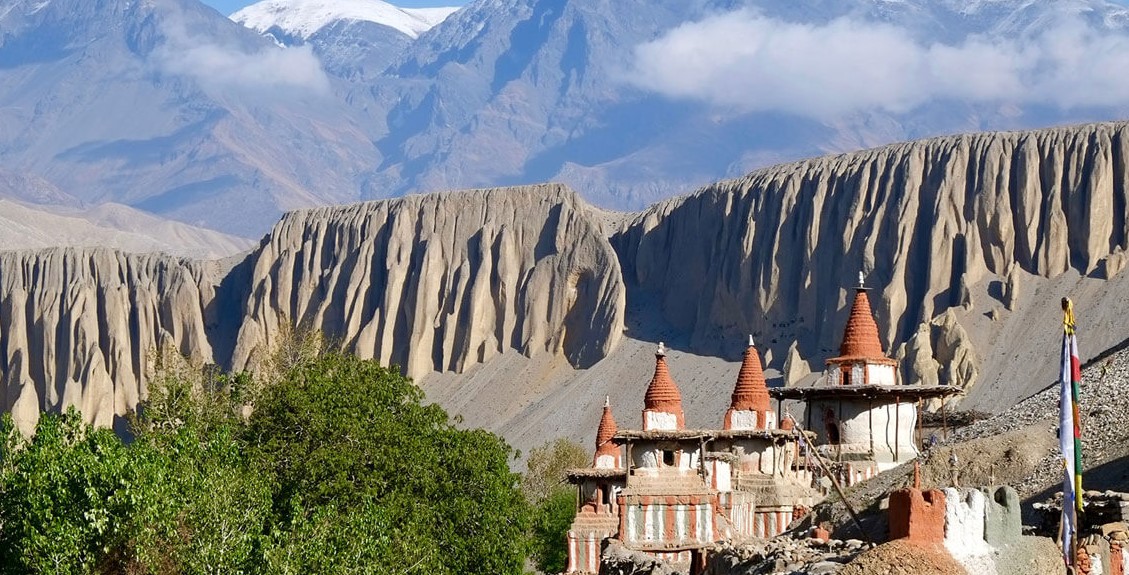
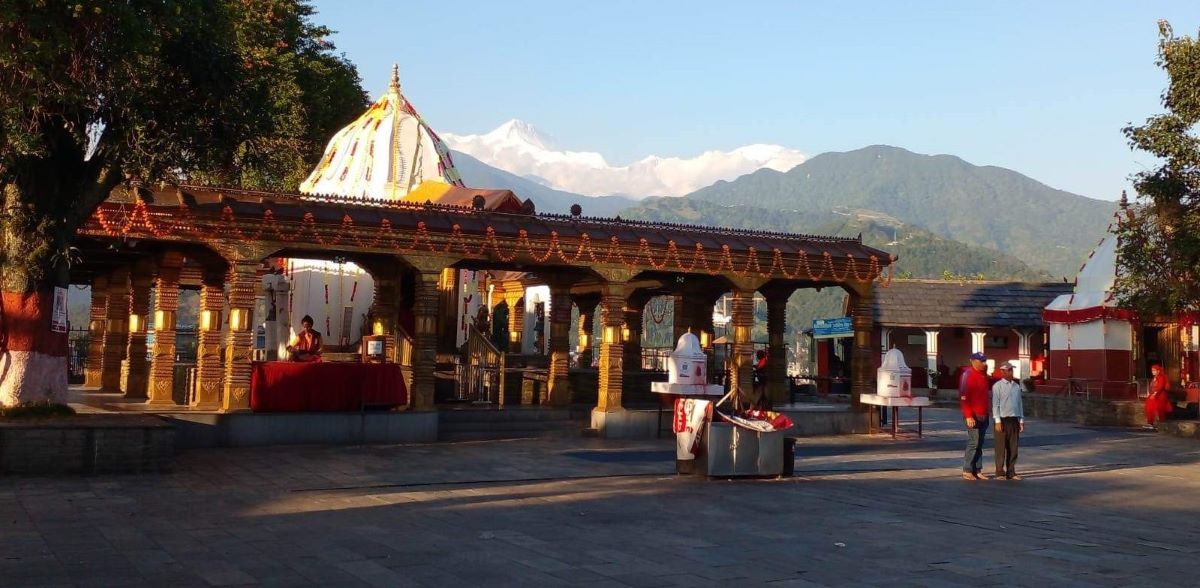
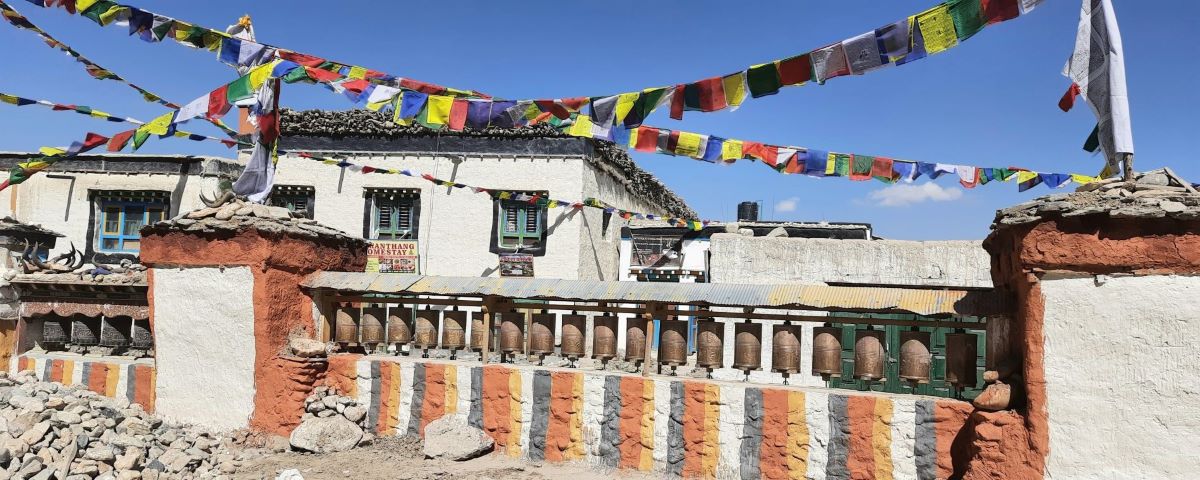
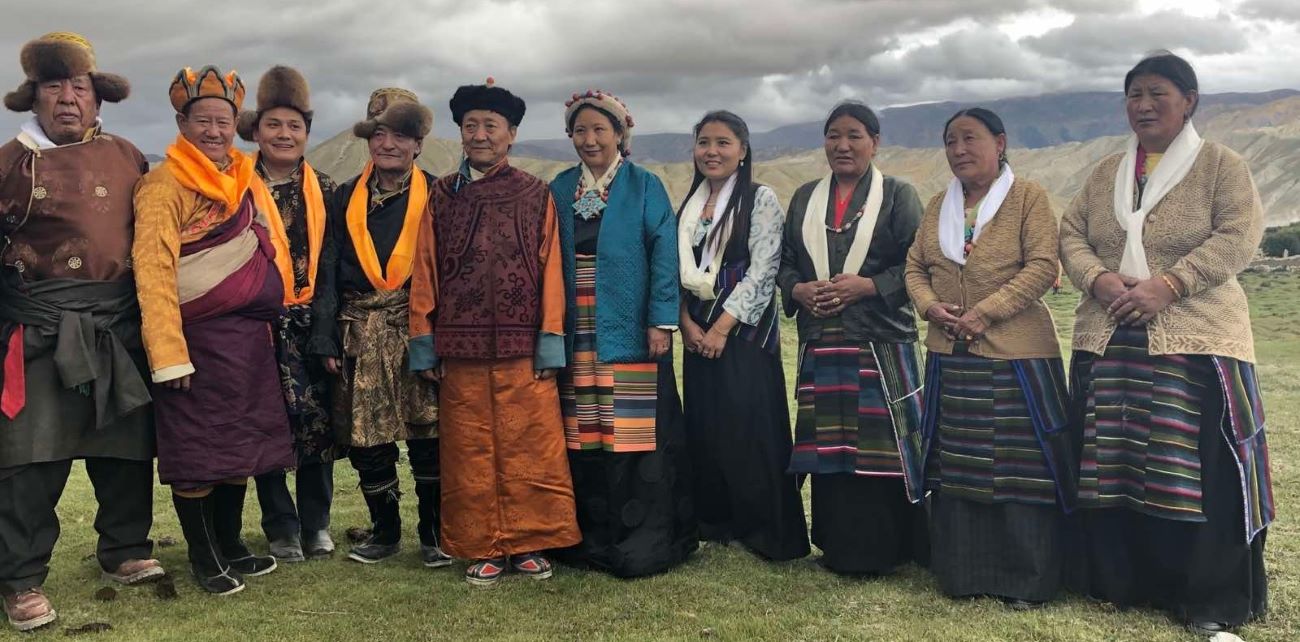
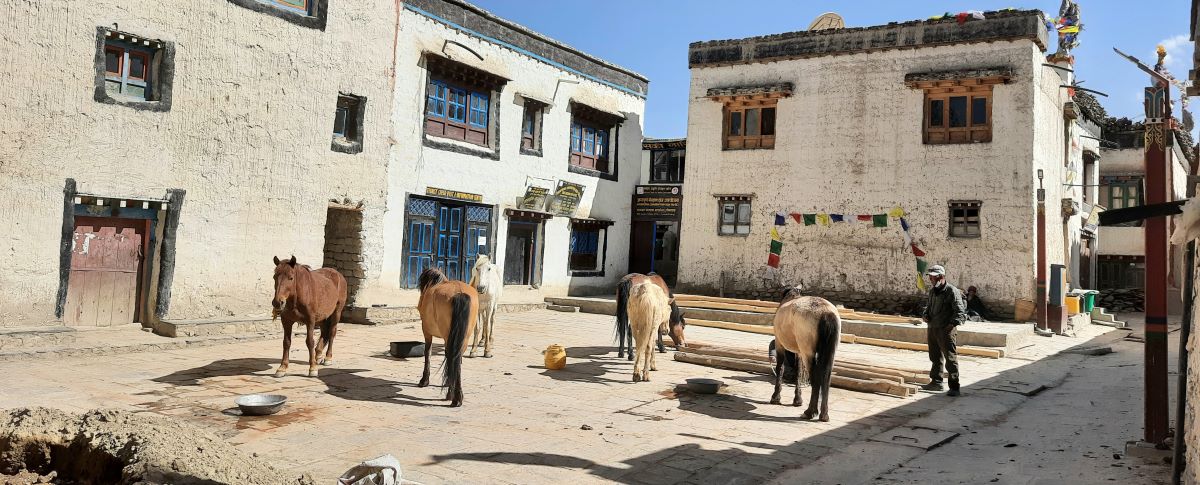
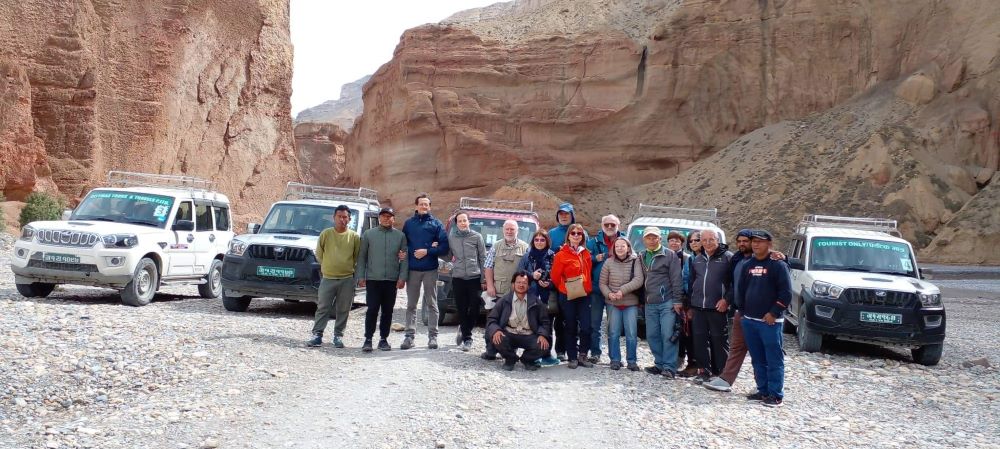
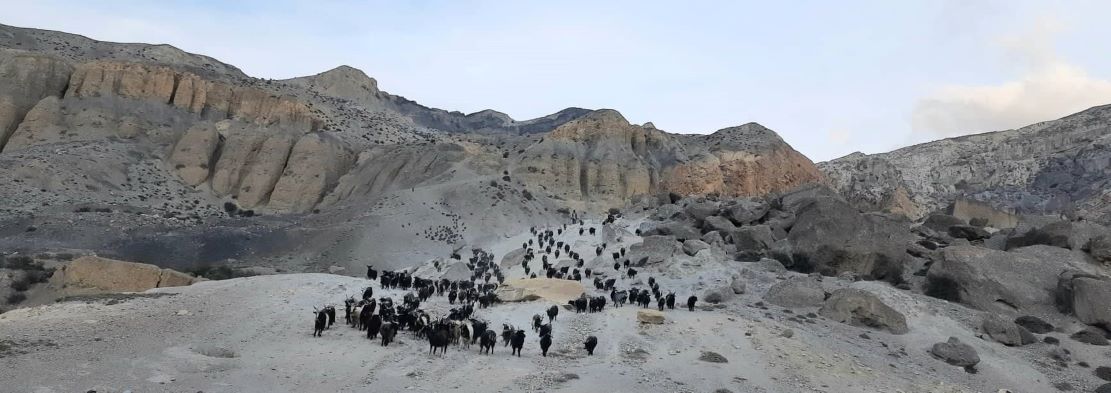
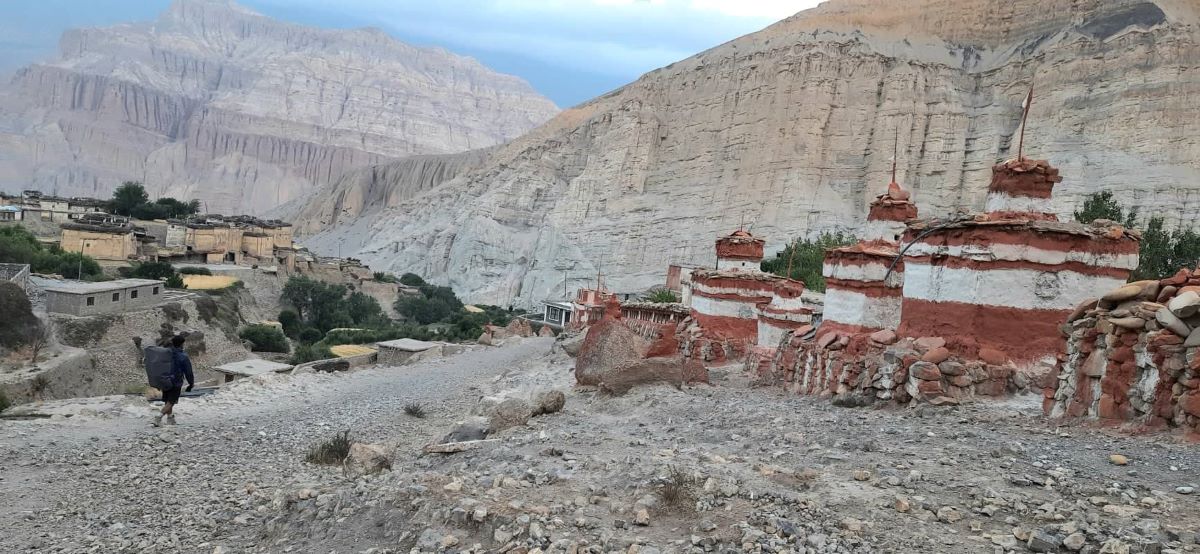
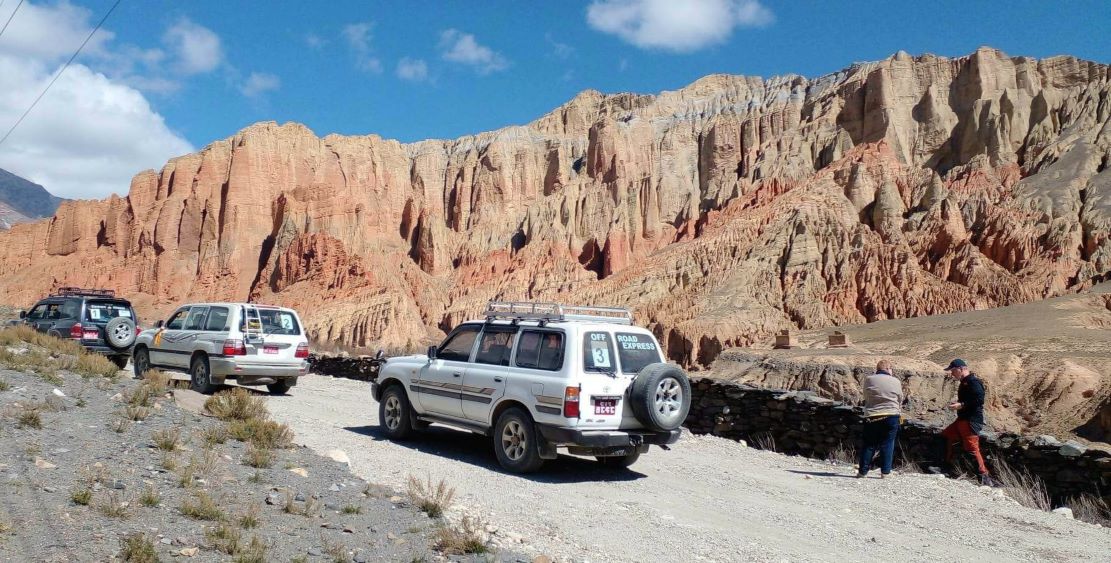
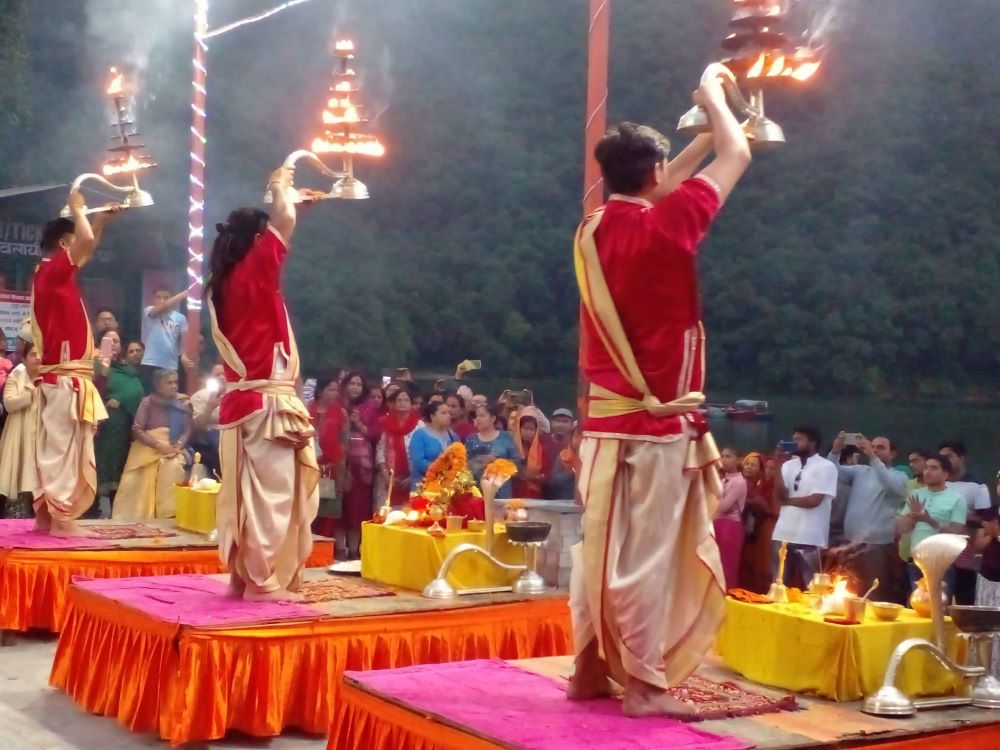
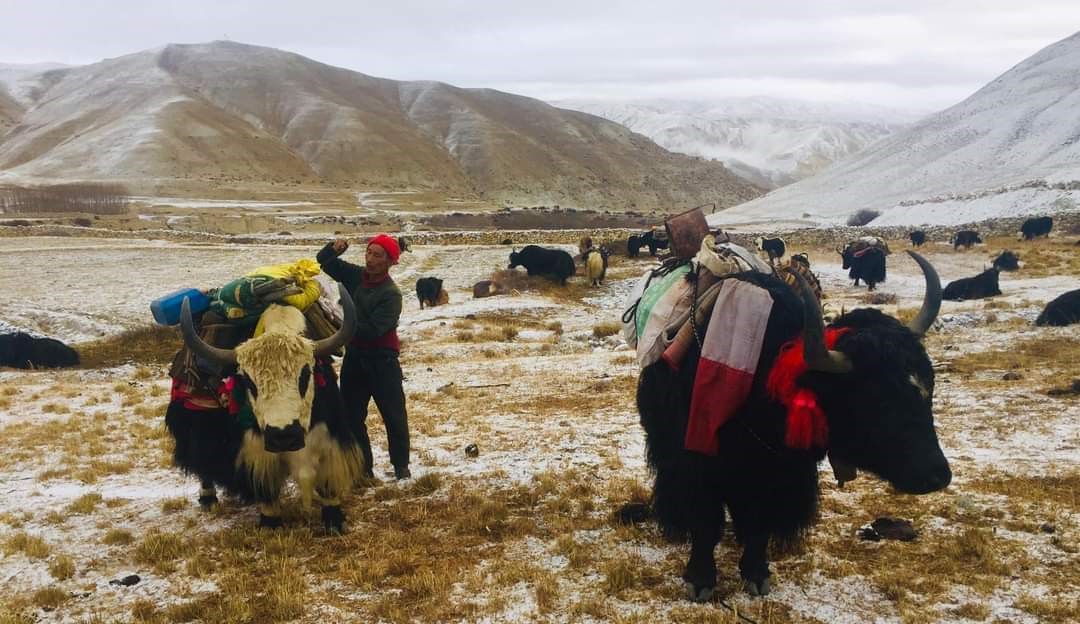
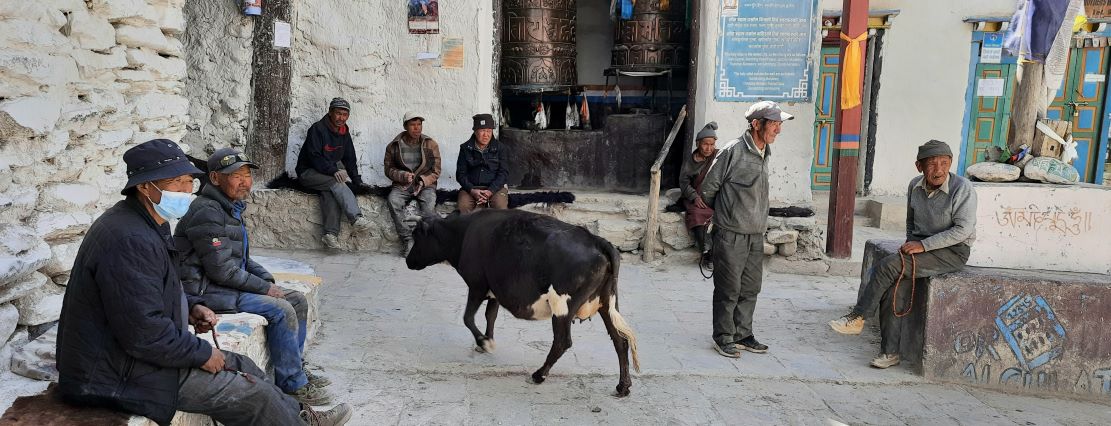
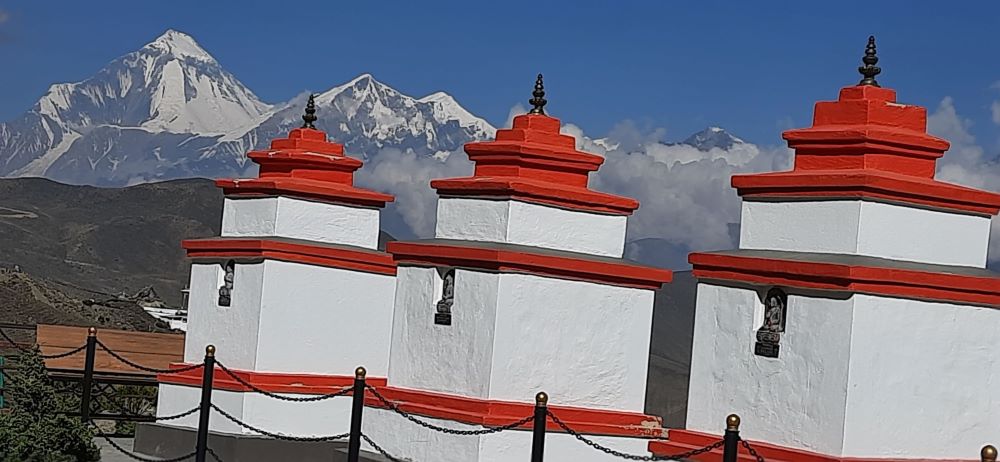
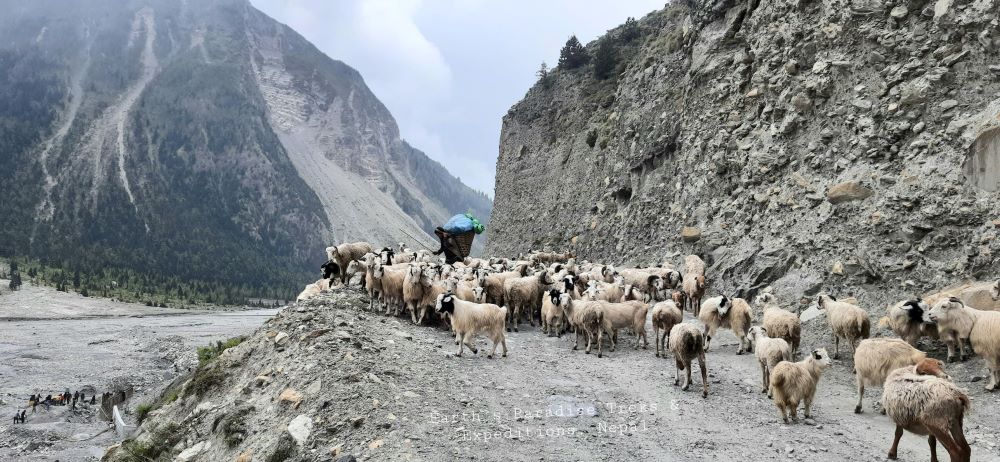
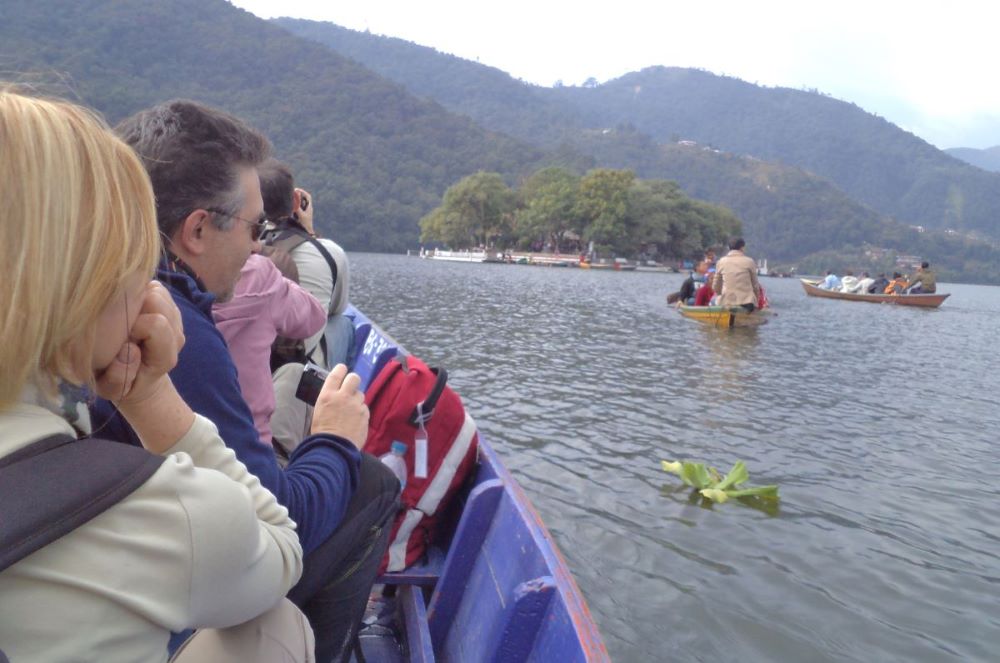
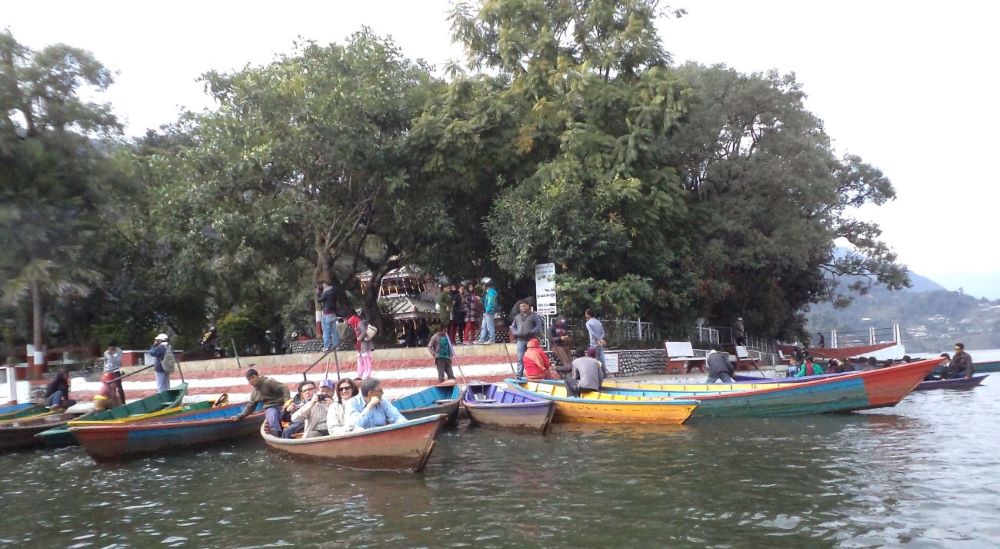
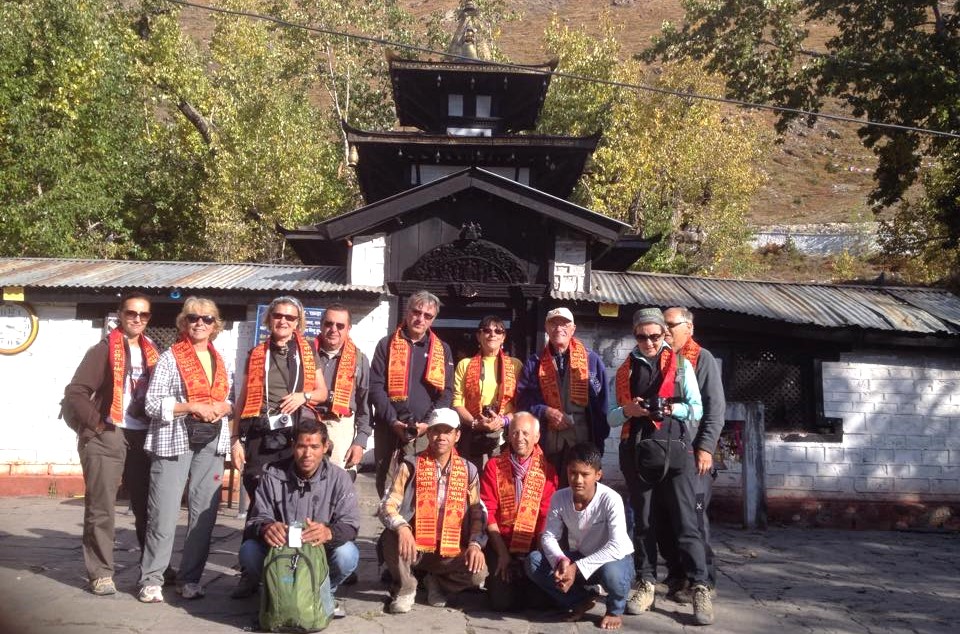
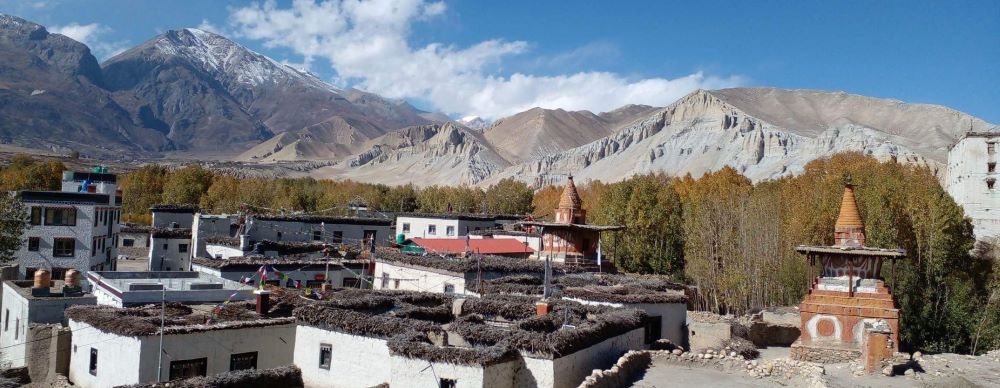
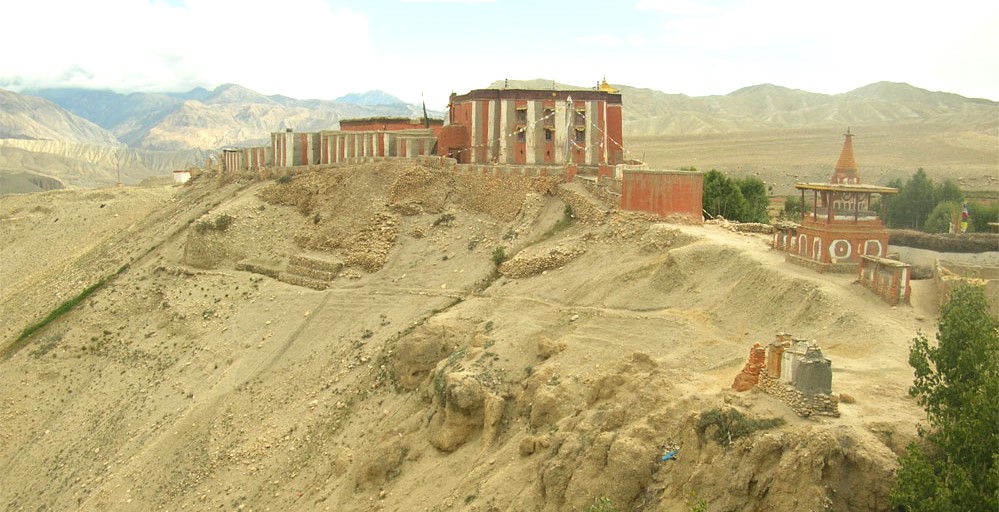
Destination
Activity
Start/End Point
Duration
Grade
Season
Group Size
Hotel/Accomdation
Highest Elevation